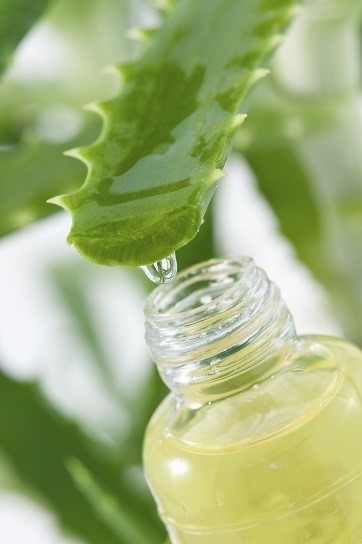 Aloe vera (Aloe Vera Barbadensis) is easily one of the most amazing medicinal plants mankind has yet discovered. There’s over 400 aloe species of which just four, including aloe vera, are cultivated for medicinal purposes.
Aloe vera (Aloe Vera Barbadensis) is easily one of the most amazing medicinal plants mankind has yet discovered. There’s over 400 aloe species of which just four, including aloe vera, are cultivated for medicinal purposes.
Its history among humanity dates back at least 6000 years, which is proven by Ancient Egyptian stone carvings. Egyptians referred to the leaves’ gel-like substance as “the blood” and both Cleopatra and Nefertiti used aloe vera in their daily beauty regimen.
In fact, the Egyptians even embalmed newly dead mummies with aloe vera gel, to prevent decomposition and grant eternal life. The Papyrus Eber, a 1550BC medical text, contains detailed descriptions of aloe vera’s anti-inflammatory effects.
Fast forward 2000 years to Ancient Greece, and for Alexander the Great, aloe vera was so sacred that he regularly brought along his own supply to treat wounded soldiers. He even conquered the entire land of Socrata in an obsessive attempt to control the plantations. During his later schemes to invade India, Alexander based his army in Socrota to ensure a fresh supply.
By the 1600s. Aloe was one of the 16 sacred plants in Native American. Certain tribes rubbed aloe vera juice all over their body to protect themselves from insect bites. Supposedly, Christopher Columbus brought pots of aloe vera with him on his ships as he set sail to discover America.
Aloe vera has given birth to skin-enriching legends in every culture it has ever come into contact with…
…and today, scientific experiments are finally supporting what our ancient ancestors knew from experience. Back in 2014 a study was released showing that simple aloe vera gel can dissolve your pimples.
50% aloe vera gel slashes acne
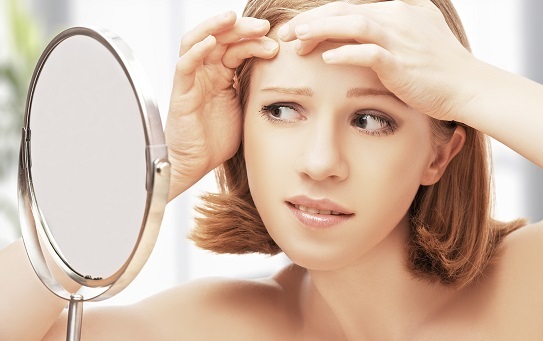 Scientists led by Dr Z Hajheydari gathered 60 acne-ridden volunteers and divided them into two test groups of 30; group 1, with a topical retinoid cream (0.05% tretinoin), and group 2, who received the same cream but featuring 50% aloe vera gel.
Scientists led by Dr Z Hajheydari gathered 60 acne-ridden volunteers and divided them into two test groups of 30; group 1, with a topical retinoid cream (0.05% tretinoin), and group 2, who received the same cream but featuring 50% aloe vera gel.
After 8 weeks, the results offered the clearest proof you could possibly hope for.
The tretinoin was decent, but the combined tretinoin/aloe vera gel reduced inflammatory acne lesions, non-inflammatory acne-lesions, and total acne lesions much more effectively.
Better, the combination cream group endured far fewer side effects. One of the 75 medicinal compounds in aloe vera was clearly acting as damage control. The scientists concluded that “TR/AVG was well tolerated and significantly more effective than TR and vehicle for… mild to moderate acne vulgaris”.
Read Annihilate Your Acne – get the ultimate diet for clear and glowing skin!
How does aloe vera, a common succulent (it’s not a cactus) found in Africa, Asia and the Middle East, achieve this magic? Easily, because of all the natural topical treatments, few can match aloe vera’s staggering 75 recognised bioactive compounds. First, there are traces of the standard vitamins and minerals like zinc, vitamin C and vitamin E. Then there’s anti-inflammatory saponins, antioxidant proteins like metallothionein, traces of almost every amino acid needed for human survival.
Aloe vera contains twelve members of a strong phenolic antioxidant family called anthraquinones, including aloin and emodin. Several compounds are especially well researched, including glucomannan, a polysaccharide (sugar), and gibberellin, a plant based growth hormone.
Your acne will have a hard time recovering if aloe vera so much as brushes against your face. But what are the specific pathways involved?
Aloe vera’s standout acne power – wound healing
In all honesty, aloe vera’s power can barely be contained, but its most notable one is to help old acne heal faster.
To get beautiful, radiant and clear skin, slowing pimple formation is obviously important. However, you also have to massively accelerate their healing. That way, you will have less acne on your face at any given time.
Enter collagen formation. Collagen forms 30% of protein in the human body, creating a scaffolding in the skin which other proteins and immune actors congregate around. Collagen is vital for rebuilding post-pimple skin, and like royal jelly, aloe vera can accelerate its production.
ONE – in this 2000 study by Thai scientists, 24 male rats were divided into four groups, and some deliberately burnt. After 7 and 14 days of twice daily application, aloe vera was dramatically superior to placebo for treating the wounds. The conclusion was promising for acne: “aloe vera could exhibit the actions of both anti-inflammation and wound healing promotion”.
Vital reading: the top 6 vitamins and minerals for radiant and clear skin
TWO – an interesting 1996 study where rats were purposefully wounded and treated with aloe vera 3 times per day for 14 days. The contraction of the wound accelerated significantly, and the cause was identified too: a surge in the skin’s collagen levels.
THREE – in this 1998 study, scientists carve thick incision wounds into diabetic rats. The rats were divided into 5 groups, two of which featured aloe vera, applied three times daily. After 21 days, the aloe vera successfully decreased wound inflammation, increased collagen levels, and improved wound maturation and contraction.
FOUR – the same team then returned, Dr P Chrithra’s crew, who concluded that “aloe vera increased the collagen content of the granulation tissue as well as its degree of crosslinking”, in a near identical rat experiment. Essentially, there was more collagen and stronger collagen, all thanks to aloe vera (study).
FIVE – finally, a combination of aloe vera gel and collagen was applied to human volunteers, leading to a dramatically accelerated wound healing rate (study). After ten weeks, the wound was gone, and the scientists concluded that “the compound was well accepted and efficient”.
There’s a mountainous pile of evidence that aloe vera can heal old acne scars and accelerate the disappearance of your newly dead acne.
Two compounds stand tall above the rest. Glucomannan, a polysaccharide, and gibberellin, a plant growth hormone, both interact with growth factor receptors on the wound’s fibroblasts (skin cells which manufacture collagen and other proteins), stimulating their activity.
The words “hyaluronic acid” and “dermatan sulfate” also pop up constantly alongside aloe vera in studies. A quick google search reveals all; hyaluronic acid is the celebrity of the moisturising world, added to serums everywhere. Dermatan sulfate is the ignored, jealous moisturising sidekick, but both are found naturally in human skin too.
Important article – the top 7 natural topical treatments for acne
Also promising is aloe vera’s confirmed natural bleaching ability, which simply dyes your acne scars back to their original colour. History offers countless wound healing examples, such as Alexander the Great healing his soldiers.
Aloe vera has countless anti-inflammatory compounds
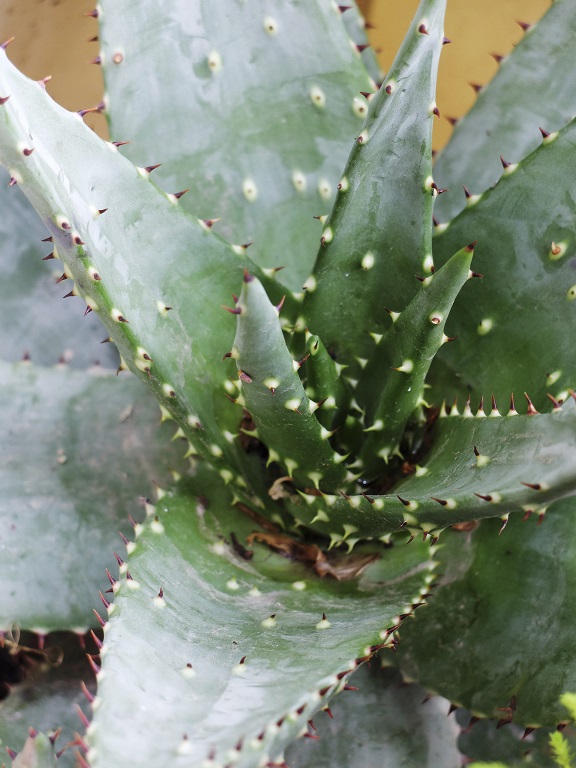 As every teenager should know, chronic inflammation is the main cause of acne vulgaris. Diet, nutrition and lifestyle are most important, seizing control of a hyperactive immune system from the inside out.
As every teenager should know, chronic inflammation is the main cause of acne vulgaris. Diet, nutrition and lifestyle are most important, seizing control of a hyperactive immune system from the inside out.
Nevertheless, topical treatments like rose water and resveratrol are great for targeting the skin’s surface directly. Some, like resveratrol, succeed using a single unstoppable anti-inflammatory compounds, but aloe vera joins raw honey in combining dozens of smaller enzymes.
Firstly, aloe vera is rich in the enzyme bradykinase which degrades bradykinin, an important inflammatory mediator. This study confirmed that the theory translates, that aloe vera lowers bradykinin when applied to real world skin: “aloe barbadensis gel contains a material that inhibits the bradykinin effect, which might explain the anti-inflammatory properties”.
Secondly, there’s the compound C-glucosyl chromone, which according to this study on an inflamed mouse ear, has just as strong topical anti-inflammatory activity as pharmaceutical hydrocortisone (catabolic steroids). Aloe vera contains plenty; in fact, it was the first plant from which the compound was isolated in 1996.
Then there’s the class of phenolic antioxidants called anthraquinones. The most notable is aloin, a bitter yellow coloured compound found in at least 68 of the aloe species. Aloin was long used as a laxative before the FDA ruled it as unsafe in 2002. However, it’s been born again as an inflammation slasher, inhibiting COX-2 (study), the public enemy number 1 of inflammation which stimulates numerous smaller immune system cytokines.
Raw honey – a natural secret for wiping out acne bacteria
The same study also showed that another aloe vera anthroquinone called aloe-emodin could reduce COX—2. Its anti-inflammatory powers equalled kaempferol and quercetin, a powerful antioxidant from red onions. Aloe emodin was “a possible key constituent responsible for the anti-inflammatory activity of aloe”.
This study and this study also observed reductions in inflammatory chemicals like interleukin-1beta. Interestingly, aloe-emodin also possesses strong anti-viral effects against the herpes virus in tests on cells. Could it kill p.acnes bacteria as well? Who knows.
Gibberellin, the plant hormone that upregulates collagen output, can decrease inflammation in diabetic mice with poor wound healing (study), concluding that gibberellin was a chief anti-inflammatory component of aloe vera. This study was more mixed, observing increased activity of pro-inflammatory mast cells.
But what really puts the cherry on the skin-clearing cake is gibberellin’s ability to inhibit substance P, one of the least famous villains behind acne, a nameless compound with a tight link to sebum production. Gibberellin could lower substance P in both prolonged and single doses.
Aloe vera gel contains lupeol
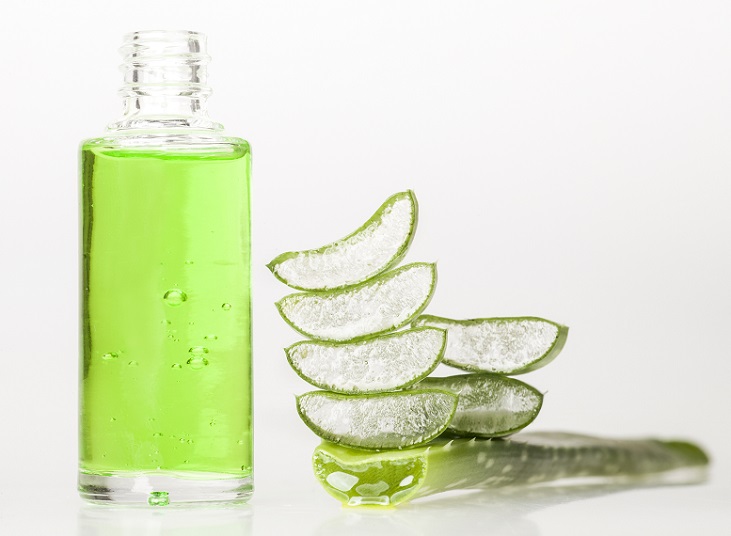 Next we have what I believe to be aloe vera’s ultimate anti-inflammatory phytonutrient – lupeol.
Next we have what I believe to be aloe vera’s ultimate anti-inflammatory phytonutrient – lupeol.
Lupeol is a triterpenoid fatty acid found in aloe vera gel, and also mango and dandelion coffee. There’s so many studies that reading them all would make your brain explode. This, this, this, this, this, and this study found that lupeol lowered inflammation, whether from aloe vera itself or other medicinal plants.
The most clear-cut reduced the swelling of an inflamed rat paw by 39%, massacring the pharmaceutical NSAID indomethacin, at just a 35% reduction.
Another study compared lupeol to the anti-inflammatory compound alpha-Mangostin found in the mangosteen fruit. Mangosteen has been hyped up as a superfood for years now but the 38.70% reduction of skin inflammation fell well short of lupeol’s 57.14%.
Lupeol in aloe vera reduces inflammation in rat skin, human skin, mouse skin – probably even alien skin if we could track them down (check out this massive scientific review).
Lupeol is abundant in aloe vera, and what’s more, it’s found in very few other plants.
Stepping up to the plate last is the polysaccharide glucomannan. This uncommon plant-based sugar, traditionally extracted from the elephant yam (konjac), has flooded into the supplement market during the last ten years as a natural weight loss pill.
It’s also used as an emulsifier and thickener in processed food. However, what we like is this study on mice with the inflammatory skin conditions eczema and atopic dermatitis, who were fed glucomannan for 8-9 weeks daily. There was a big reduction in inflammatory chemicals such as interleukin-4 and TNF-alpha, and that was only orally. By applying the glucomannan topically the anti-inflammatory properties should become hyper concentrated.
Why vitamin C is the acne nutrient you cannot ignore
What’s interesting is that again, glucomannan had the ability to lower substance P. That’s two compounds now with that power, hinting that aloe vera can dry your sebum rivers too, not a power it’s well known for. Glucomannan could even reduce hyperkeratosis, an overgrowth of the sticky protein keratin which glues dead skin cells together into pore clogging clumps.
What about aloe vera itself?
There’s one last hurdle – what about the whole aloe vera gel or extract? Could a random irritating plant chemical outweigh all the anti-inflammatory compounds, scuppering its ability to clear acne?
For most people, the answer is a resounding no, because direct studies have been just as conclusive:
ONE: this 2003 study concluded that aloe vera extract had significant inhibitory activity against p.acnes-induced skin inflammation. Deadly pro-inflammatory, pro-acne chemicals such as interleukin-8 and TNF-a fell off a cliff.
TWO: scientists reached an exciting conclusion in this old 1989 study: “small amounts of A. vera given topically will inhibit inflammation induced by a moderate amount of irritant”. Aloe vera lowered skin inflammation by a gigantic 47.1%.
THREE: this 1996 study was particularly interesting, applying aloe vera to inflamed rat paws and observing a reduction in inflammatory chemicals called neutrophils. Neutrophil overload is a nightmare for acne, because their main, ordinarily healthy job is to unleash free radicals to break down damaged cells. For us acne patients, the conclusion could not be more promising: “the extracts of aloe vera gel have anti-inflammatory activity”.
Aloe vera are the words that angry pimples dare not speak. Few plants can beat the sheer number of anti-inflammatory compounds the gel contains.
Elsewhere there’s one study which is almost rock solid proof. It tested psoriasis, a skin condition that causes red, crusty, flaky patches of skin, common between ages 15 and 35.
Scientists assembled 60 patients aged 18 to 50 (mean age 25.6), all with moderate to slight psoriasis. The patients applied either a placebo or 0.5% concentration aloe vera three times daily for five consecutive days per week.
By the end of the experiment the psoriasis cream had cured 25 out 30 patients (83.33% success rate), while the placebo could muster only 2/30 (6.66%). Furthermore, there were no side effects whatsoever. The study was conducted superbly, double-blind and placebo controlled. The mean duration of the disease beforehand was 8.5 years, so they weren’t just “casual” psoriasis sufferers.
Any side effects for acne?
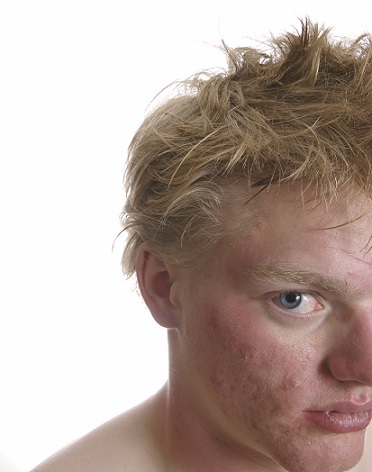 Since every human being on planet earth has slightly different genetics, almost all natural topical treatments can cause allergies in a tiny minority of people. Raw honey, royal jelly and grapeseed oil all occasionally cause allergic rashes and swelling, and aloe vera is no exception.
Since every human being on planet earth has slightly different genetics, almost all natural topical treatments can cause allergies in a tiny minority of people. Raw honey, royal jelly and grapeseed oil all occasionally cause allergic rashes and swelling, and aloe vera is no exception.
In fact, aloe vera’s one major downside is a slightly higher rate of allergic reactions than others. I gleamed that fact from extensive trawling through the archives of the internet.
Some of the reactions spoken of include…
-A rash of eczema popping up despite an improvement in acne.
-Tiny red bumps all over the face.
-Red rashes springing up despite an improvement in acne.
Elsewhere there’s this case study, documenting a 72 year old woman who had taken to bathing her legs with homemade aloe vera juice in search of pain relief. Scientists had observed patches of dermatitis (an inflammatory skin disorder) on her legs. Tests of the patches showed positive reactions to both the leaf and macerated jelly of aloe vera. This study and this study observed occasional redness, irritation, and contact dermatitis.
It’s not surprising; with an endless array of compounds comes a higher chance of a reaction to one. However, the first study did comment that “reports of allergic reactions are rare”, and they certainly are; only moderately more common than other topical acne treatments. Many of the wound healing studies above specifically praised aloe vera’s lack of side effects.
The solution for acne then? Apply a patch of aloe vera to your arm before your face, to establish whether you have a sensitivity or not.
Another common fear is that aloe vera increases sensitivity to sunlight, and hence acne due to the free radicals caused by ultraviolet light.
One study supports this theory, claiming that aloe vera leads to phototoxicity, but another study found the exact opposite. Apparently, applying aloe vera gel to human skin generates an antioxidant protein called metallothionein, which both scavenges free radicals and prevents antioxidants like glutathione and superoxide dismutase from being suppressed. Consequently, inflammation plummeted in ultraviolet irradiated areas of the skin.
This study however, found preventative benefits for neither sunburn, suntan, nor sunlight induced radiation injuries. The jury is out on whether aloe vera alters your skin’s sensitivity to sunlight.
The final advantage is that unlike the popular cocoa butter, aloe vera does not possess an ounce of comedogenicity.
As part of the American Academy of Dermatology’s ongoing scheme to analyse every obscure topical treatment, aloe vera gel was assigned the comedogenicity score of a stone-cold zero.
Five (“high change of clogging pores”) is top and zero (“will not clog pores”) is lowest, so aloe vera is totally harmless. Plus, the lowering of substance P achieved by gibberellin and glucomannan should also curtail sebum production. Consider that grapeseed oil has a comedogenic score of 2, but still only rarely clogs skin pores.
One final important note: do not consume aloe vera! Doing so could lead to nausea, digestive havoc, and even liver problems! There’s no point anyway. For acne, it’s strictly a topical treatment.
The best aloe vera product for acne?
If you want the greatest amounts of nutrients and compounds possible, then you’ll have to trek to the arid deserts of Africa or Asia with a machete to hack the leaves off the plant personally. The second best option is to grow your own miniature aloe vera plant in your house.
Fresh is ultimate. This study found that pasteurizing aloe vera reduced the vitamin C content and antioxidant activity by 16% and 57% respectively. The glucomannan content plunged by over 30% as well.
The problem is that most products on the market are heated and processed so harshly. The developers don’t seem to care about the effectiveness; they simply want an excuse to slap aloe vera on the label. Hence the beneficial gibberellin, glucomannan, antioxidants and fatty acids are warped, or shattered entirely…
…but there’s one product where that age-old rule doesn’t apply: Seven Minerals Aloe Vera Gel (amazon link).
The makers of this product have taken special care to process the aloe gel gently, preserving the special compounds. The gel is entirely free from harsh chemicals found in cheap products such as sodium hydroxymethylglycinate.
There’s no thickeners, and the preservatives are entirely natural ones like citric acid or even seaweed extract, an ingredient I’ve never stumbled across anywhere else before.
Short of trekking to the plant’s homeland and getting lost in the desert, or emptying your entire bank account on the super-elite versions, Seven Minerals Aloe Vera Gel is the best aloe vera for acne bar none.
Conclusion
Aloe vera packs such a powerful punch against acne that your pimples will be crawling to the edge of the ring within 5 seconds.
What’s more, it has a very clear place in the pantheon of acne topical treatments. Grapeseed oil prevents clogged pores by supplying vitamin E. Raw honey is perhaps the ultimate topical treatment for acne, but its magic is mostly antibacterial compounds like Methylgyloxal, peptides like bee-defensin 1, and other enzymes.
Aloe vera meanwhile, is an amazing treatment for lowering inflammation and accelerating wound healing. The only tiny risk is an allergy.
Finally, if you’re looking for a vast collection of studies on aloe vera and skincare, this review is a goldmine.
The hype is real – aloe vera comes at your pimples from 10 directions at once.
NEXT: learn the root causes of acne, clear your skin permanently
Thanks for reading!